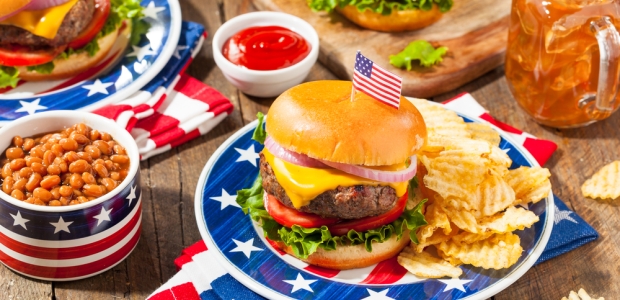
Grill Like a PRO – and Avoid Food Illnesses
This year, one in six Americans will get sick from food poisoning, according to the USDA's Food Safety and Inspection Service.
Tips from FoodSafety.gov can help Americans grilling out for the Fourth of July holiday avoid food illnesses, certainly unpleasant and sometimes dangerously so. The agency advises that outdoor cooks learn how to grill like a "PRO" – that is, Prepare the food, Read the Temperature, Off the grill – during this holiday and for all of their summer barbecues.
How does the host keep guests safe from foodborne illness? "This year, one in six Americans will get sick from food poisoning (also known as foodborne illness). Food poisoning can affect anyone who eats food contaminated by bacteria, viruses, parasites, toxins, or other substances. Some groups of people – such as older adults, pregnant women, children younger than five years, and people with weakened immune systems – have a higher risk of getting sick from contaminated food. And if they do get sick, the effects of food poisoning are a lot more serious," according to the USDA's Food Safety and Inspection Service, which advises that checking meat's internal temperature with a food thermometer is the best way to ensure protection.
The tips are explained in three easy steps:
- P—Place the Thermometer. Make sure your food is ready by checking the internal temperature. Find the thickest part of the meat (usually about 1.5 to 2 inches deep) and insert the thermometer. "If cooking a thinner piece of meat such as chicken breasts or hamburger patties, insert the thermometer from the side and ensure the probe reaches the center of the meat.
- R—Read the Temperature. Wait about 10-20 seconds for an accurate temperature reading and use these internal temperature guidelines for meat and poultry: beef, pork, lamb, and veal (steaks, roasts, and chops): 145° F with a three-minute rest time; ground meats: 160° F; whole poultry, poultry breasts, and ground poultry: 165° F
- O—Off the Grill. Once the meat and poultry reach their safe minimum internal temperatures, take the food off the grill and place it on a clean platter. Do not put cooked food on the same platter that held raw meat or poultry. Remember to clean your food thermometer probe with hot, soapy water or disposable wipes.
Safety tips for serving food outdoors:
- Perishable food should not sit out for more than two hours. In weather above 90° F, food should never sit out for more than one hour.
- Serve cold food in small portions and keep the rest in the cooler. After cooking meat and poultry on the grill, keep it hot until served (at 140° F or warmer).
- Keep hot food hot by setting it to the side of the grill rack, not directly over the coals where it could overcook.
FSIS wants cooks to share their photos of safe grilling during the Independence Day holiday weekend by uploading them with the hashtag #GrillingLikeaPRO.
For information about food poisoning and keeping food safe from bacteria, visit www.foodsafety.gov.